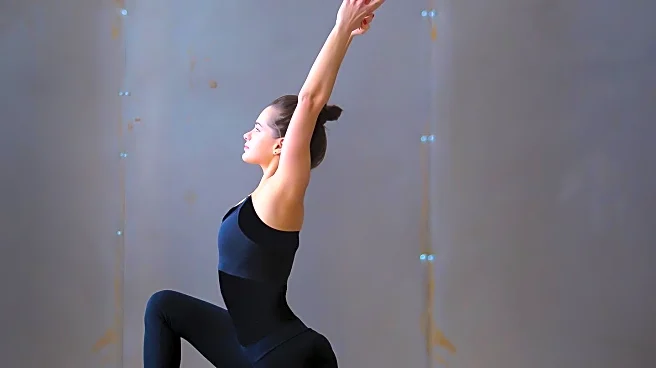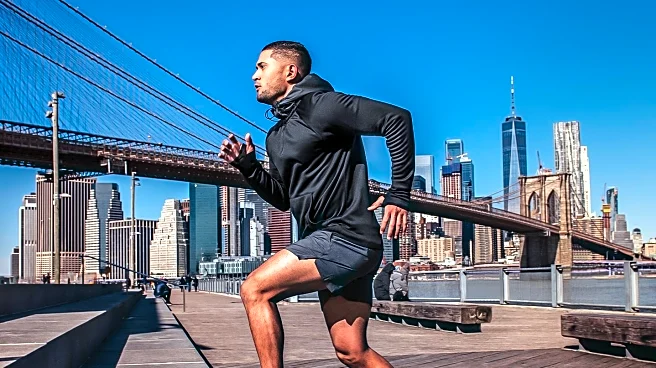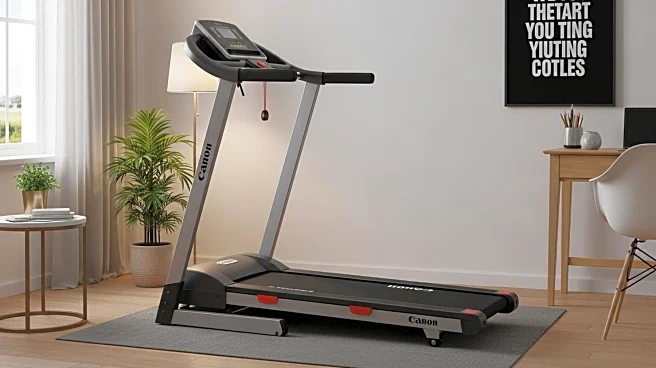What's Happening?
Posture walking is emerging as a popular fitness trend, focusing on maintaining proper body alignment while walking. This method emphasizes walking with relaxed shoulders, a head positioned directly over the spine, and an engaged core. Fitness experts highlight the importance of posture walking in improving muscle and joint health, digestion, breathing, and energy levels. The trend is gaining traction as people become more aware of the negative impacts of poor posture, especially while walking and using mobile devices. Experts suggest that posture walking can prevent posture-related injuries and enhance overall well-being.
Why It's Important?
The rise of posture walking reflects a growing awareness of the importance of body alignment in daily activities. This trend could lead to a reduction in posture-related injuries, such as 'tech neck,' which is increasingly common due to prolonged mobile device usage. By promoting better posture, individuals may experience improved digestion, breathing, and reduced back and neck pain. Additionally, posture walking can boost energy levels and mood, potentially leading to better mental health outcomes. As more people adopt this practice, it could influence public health positively by encouraging mindful movement and reducing sedentary behavior.
What's Next?
As posture walking gains popularity, fitness professionals may develop more structured programs and workshops to educate individuals on proper techniques. There could be an increase in community events and social media challenges promoting posture walking. Health organizations might also incorporate posture walking into broader wellness campaigns, emphasizing its benefits alongside other forms of exercise. The trend may inspire further research into the long-term health impacts of posture walking, potentially influencing public health guidelines and recommendations.
Beyond the Headlines
Posture walking not only addresses physical health but also touches on cultural shifts towards mindfulness and intentional living. It encourages individuals to be present in their movements, fostering a deeper connection with their bodies. This trend aligns with broader societal movements towards holistic health practices, integrating physical, mental, and emotional well-being. As people become more conscious of their posture, it may lead to a cultural shift in how daily activities are approached, prioritizing health and wellness over convenience.











